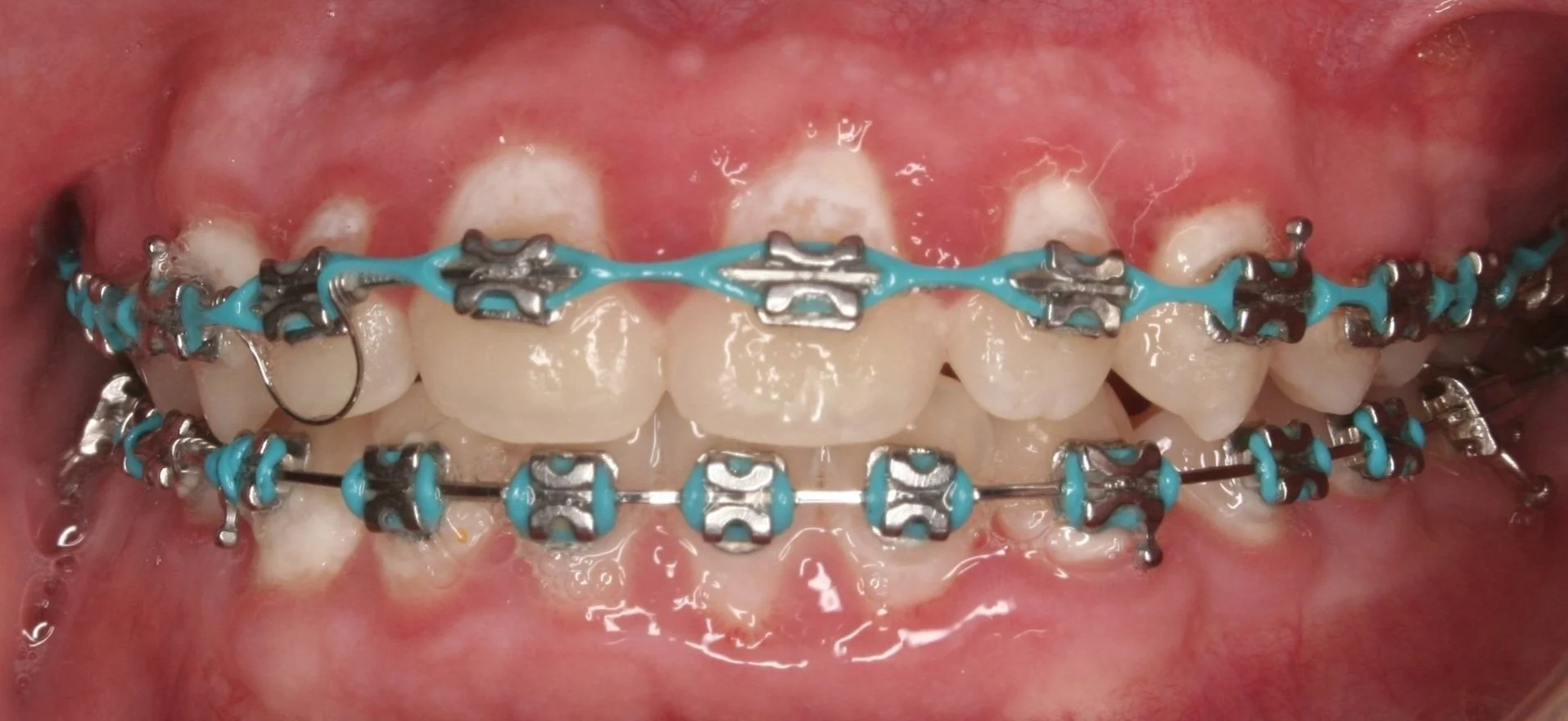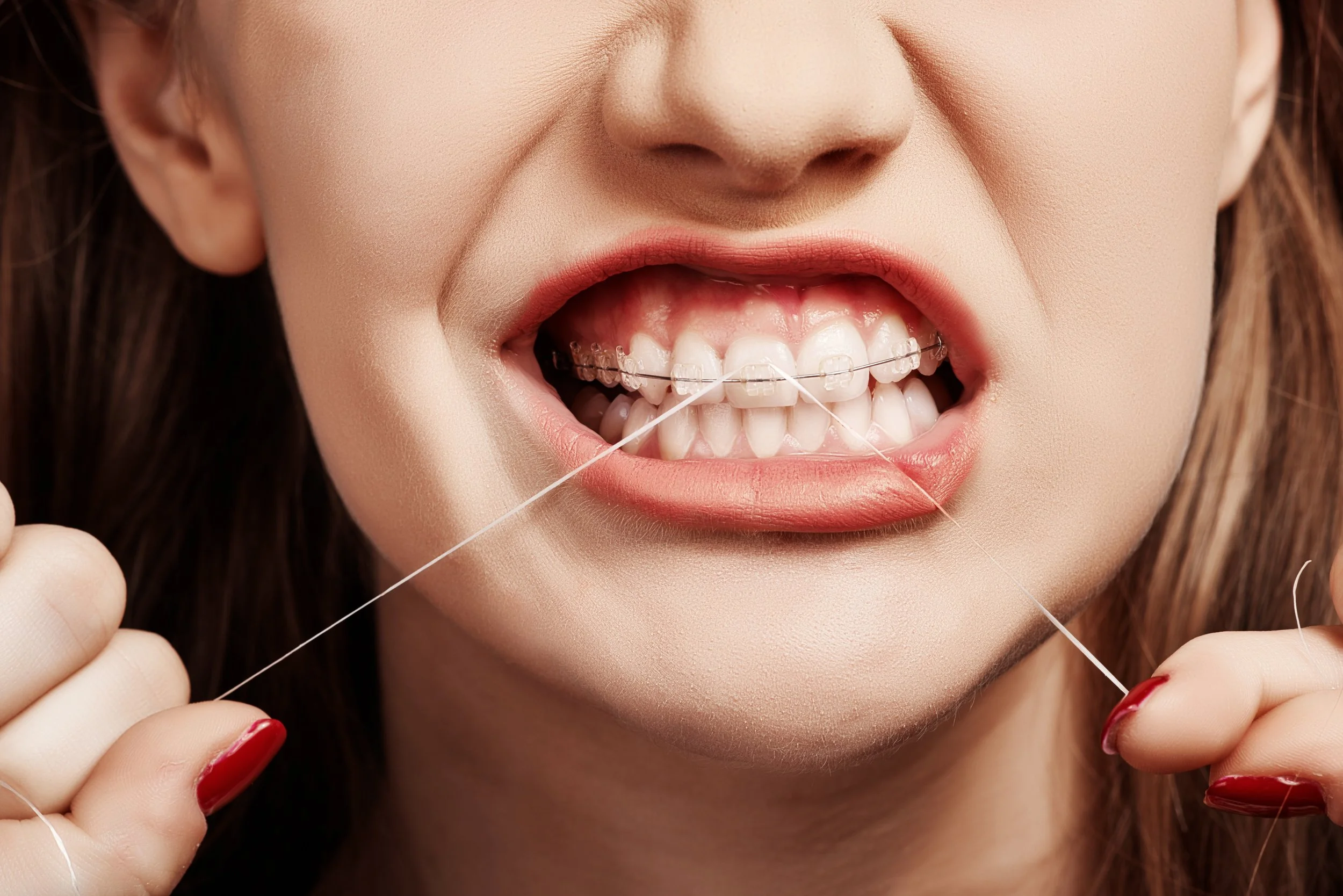Swollen Gums and Braces.
What’s the Deal?
Everything is awesome, you just got your braces changed to rainbow colors and your smile is as close to a unicorn as you can get… but wait, what?!? You look in the mirror and instead of beautiful rainbow hues all you see are red swollen gums. What is going on?
Ok, first don’t panic, this is actually super common.
You are not alone, swollen gums are one of the most commonly reported issues related to braces. While there are a few more serious things that can cause gingival inflammation (<— fancy way to say swollen gums) usually it is not serious and can be reduced, or even fully resolved, by making a few minor changes to your daily braces care routine.
The more serious issues that can cause the gums to swell include immune disorders, side effects of certain medications and allergic reactions to some component of the braces themselves. If you have sensitivity to some metals, including nickel, you may have a rare allergic reaction to braces. Even some people with known nickel allergies can successfully wear braces without incident. More information about this uncommon allergy can be found in my upcoming blog post “Can you really be allergic to braces?”. Even if you have a metal allergy, often it is only the wires that cause an allergic reaction and there is a super easy fix for that, and no it isn’t taking your braces off early, at GoForth and Smile Orthodontics we have brackets and wires that don’t have any nickel. Dr. Goforth has successfully treated patients with known nickel allergies. So, if you didn’t start a new medication and you are not having an immune or allergic reaction then what the heck is going on?
Unhealthy Swollen Gums with Plaque Build-Up and Scaring on Teeth
Healthy Gums and Clean Teeth
It is simple; braces are hard to clean around.
When even a small amount of food or plaque is left between the bracket and the gum it irritates the gums. The mouth is busy all day - eating, breathing, digesting food, talking… all this activity naturally results in some food being stuck in those places where food easily sticks. These places are usually between teeth, behind wires and under brackets. Another natural activity every single person does every single day is develop and build-up plaque on their teeth.
We all have that one spot where flakes of pepper or tiny pieces of lettuce like to wedge
Plaque is that tooth colored stuff that you can scratch off your teeth, sometimes called tartar. Although it does seem a little gross, it really isn’t that gross.
Plaque is totally normally,
everybody makes plaque.
The trick is you have to brush it off.
Plaque is simply the biofilm byproducts (fancy and less gross word for waste paste) of the mouth’s natural microflora (fancy and less gross way of saying natural bacteria that live in your mouth). Plaque is acidic and harms teeth, which is why daily flossing and brushing at least twice a day is so important! Teeth are strong. Dentin, the outer layer of teeth is the strongest material of the body, even stronger than bone. Given its natural strength, it is not easy to harm dentin, which is why we don’t have to brush our teeth every hour. It is only when the harmful environment created by plaque and its acidic byproducts are able to sit undisturbed for an extended period of time that damage to teeth begins.
Food and/or plaque that build-up on teeth irritate the surrounding gums. Gums don’t have a brain, so they mistake these irritants as an infection and they fight back. The way the body fights is by sending blood to the site of infection. It is important to note that this isn’t a true infection - the body just behaves the same way.
You may be wondering why I am talking about all of this when you are worried about your swollen gums. Well, as with most things in the body… everything is connected! When you have an infection the body sends healing cells and immune cells through the blood. The gums are among the most vascularized tissue in the body - meaning that gums have a super high amount of blood vessels! If you think about it this makes a lot of sense because where else in the body experiences the same amount of daily trauma? Think of the last time you bit into a tortilla chip the wrong way or when you just couldn’t wait to dive into that steaming slice of pizza - ouch! But, then you move on and finish your meal because oral trauma heals pretty quickly in thanks to all those blood vessels.
The body fights infections and heals itself by sending helpful cells and material through the blood vessels.
Alright, let’s put the pieces together. Gums have a lot of blood vessels. Food or plaque is seen as a foreign infection by the gums. The gums respond by bringing extra blood filled with healing elements to fight what feels like an infection. The extra blood makes the gums swell and enlarge. Treating the underlying reason is the best way to reduce the swelling. Do this by clearing away the food and plaque build-up and keeping the teeth and gums clean long enough for the gums to heal and reduce to their normal size. Brush regularly, ideally every time you eat, but at least twice a day, being sure to focus on the area between the braces and gums.
Brushing Tips:
Always use a soft bristle toothbrush - it is easy on the gums! I love the Nimbus toothbrush which is designed with special longer bristles to massage and clean the gums. Disclaimer: I have no affiliation with this company and get no kickbacks - I just found this toothbrush company and personally love them. It is less about the brush as the technique.
Brush gently - this sometimes confuses people. Make sure the bristles of the toothbrush are making contact with all surfaces of the teeth, braces and gum-line but do not apply force. Even if you have swelling - Brush smarter not harder!
Use circular motions sweeping the plaque away from the gums.
Floss under the wire making sure to wrap the floss around each tooth and go between the gums “hugging the tooth with floss”.
If caught and treated early, it is usually easy to reduce or resolve the swelling simply by improving brushing and flossing technique and frequency. If you are brushing for enough time at least twice a day and flossing once a day you may need to address your technique. Tilt the toothbrush bristles between the tooth and the rolled swollen portion of gums to get anything that may have collected there. Best practice is to keep the gums and teeth clean to prevent swelling before it starts. It is important that the toothbrush bristles come into contact with all surfaces of your teeth, braces and under the small flap where your tooth comes through the gums. If you have swollen gums the irritated area will probably bleed when brushed. Don’t panic, this is the way the body lets you know there is a problem. Healthy gums do not bleed. If you see a little blood along the gum-line in any area, it means that area is irritated and needs to be brushed more! For technique tips see the caring for your braces page of our website.
If the gums are left swollen for an extended period of time they can actually grow. You can imagine how this works by imagining each gum cell as a bubble that fills with fluid and expands. It can expand pretty large but eventually reaches a maximum capacity beyond which it can no longer continue to expand. At this point, if the irritant is not removed and blood continues to flow to the cell, the cell will split into two. If this process is allowed to continue the number of cells will increase and there will be more gum tissue. At this point the excessive gingiva may not fully go back to normal when the irritation is removed.
Most cases of swelling can be fully corrected or at least reduced during treatment, others don’t fully resolve until the brackets are removed. There is a very small portion of those that experience gum enlargement that need surgically removal. This is referred to as a gingivectomy and can be performed with a scalpel blade or a laser.
Tip: Stay Hydrated
Drinking water improves salivary flow helping to naturally cleanse teeth.
A pro healthy gums tip: Stay hydrated. Try to drink mostly water throughout the day. This obviously washes the mouth as you drink. A less obvious benefit of being hydrated is your salivary flow is improved, which translates to your body being able to make enough spit to keep up with all your mouths needs. Bacteria love a dry mouth and can more more easily build-up plaque, increasing the risk of gum swelling. Xylitol gum can also help - see our blog post, “Unpopular Opinion; Chewing Gum and Braces”.
The unfair reality is that some people are genetically more prone to experience dramatic gingival swelling while others can have serious plaque build-up with only minor gum inflammation or enlargement. Just another example of how life isn’t fair. In some rare cases the cause of the gingival swelling is unknown. Usually keeping the teeth resolves it, but not always. In these instances it is typically best to try and get out of braces as soon as possible.
Even with excellent oral hygiene this child had very swollen gums.
The child shown in the photo above responded with significant gum swelling after power-chains were placed. She had not experienced a similar response to the previously placed individual colors. The individual colors and power-chain are made from the same material, so it likely isn’t solely a material reaction. The mother of this child is one of those amazing but slightly “Type A” personalities. When she tells me that she is brushing and flossing her daughters teeth twice a day, I know that she is on top of it. The teeth were sparkly clean and the gums didn’t bleed at all and are even stippled (which means they have that bumpy texture similar to an orange peel) and is a sign of healthy gums, but they remained very enlarged. So, this is a different case all together. Luckily this type of intense gum reaction without plaque is rare and typically resolves once the braces are removed!
Drink water. Brush your teeth often and well. Don’t forget to floss. Follow this simple advice and chances are your gums won’t swell because of your braces!







